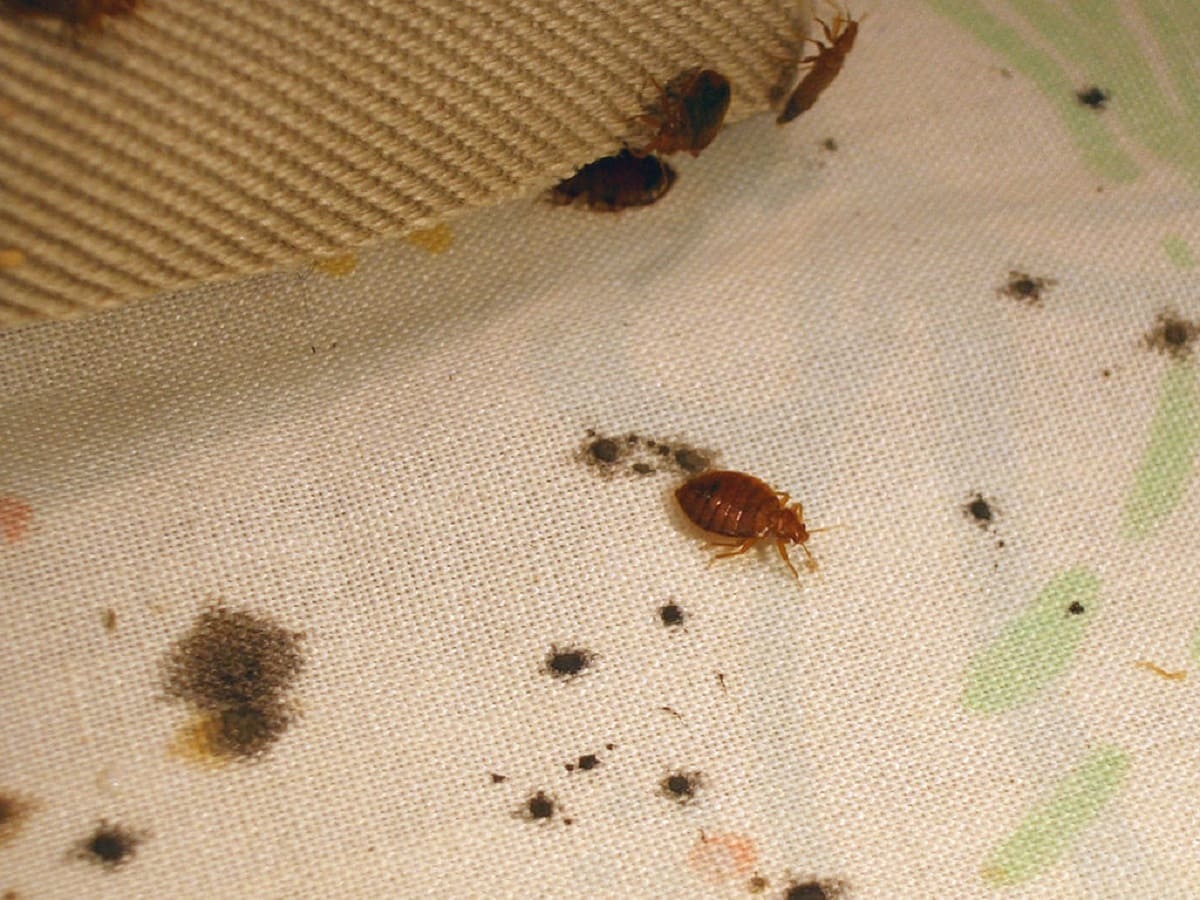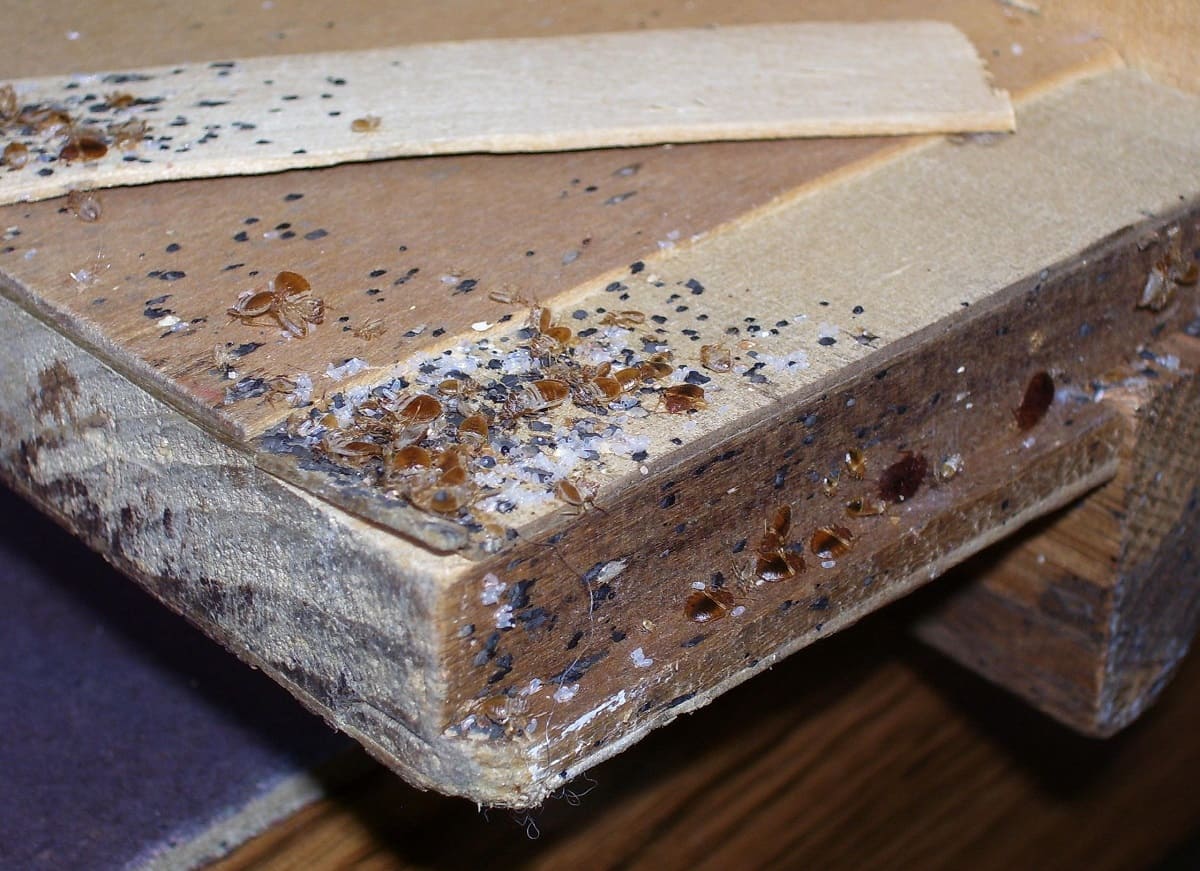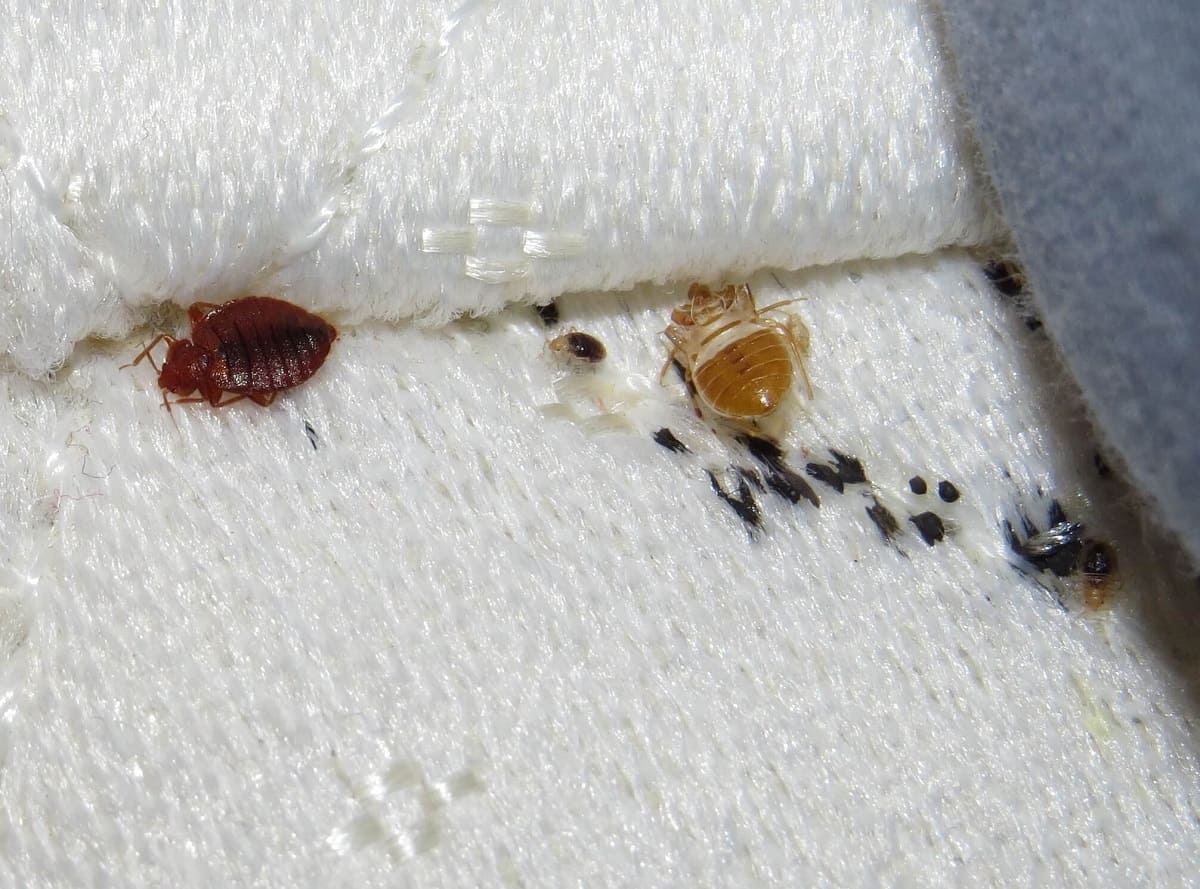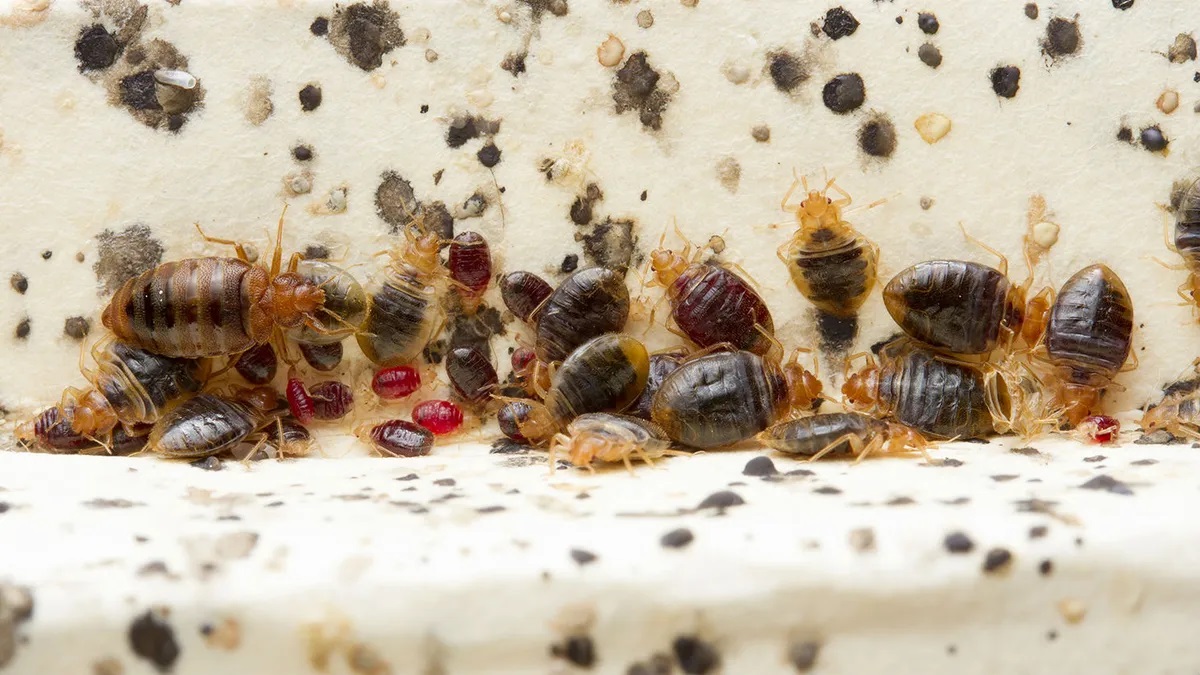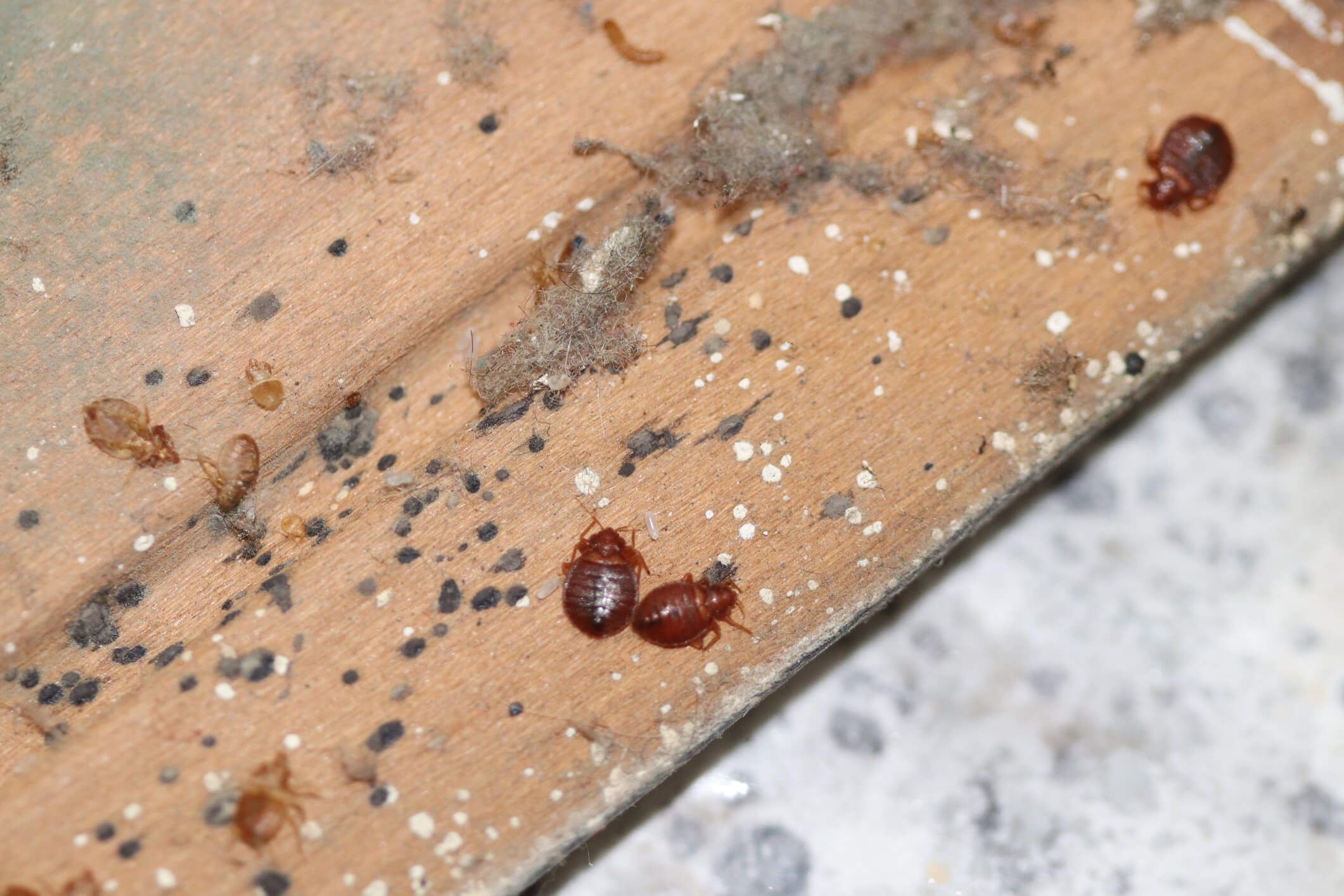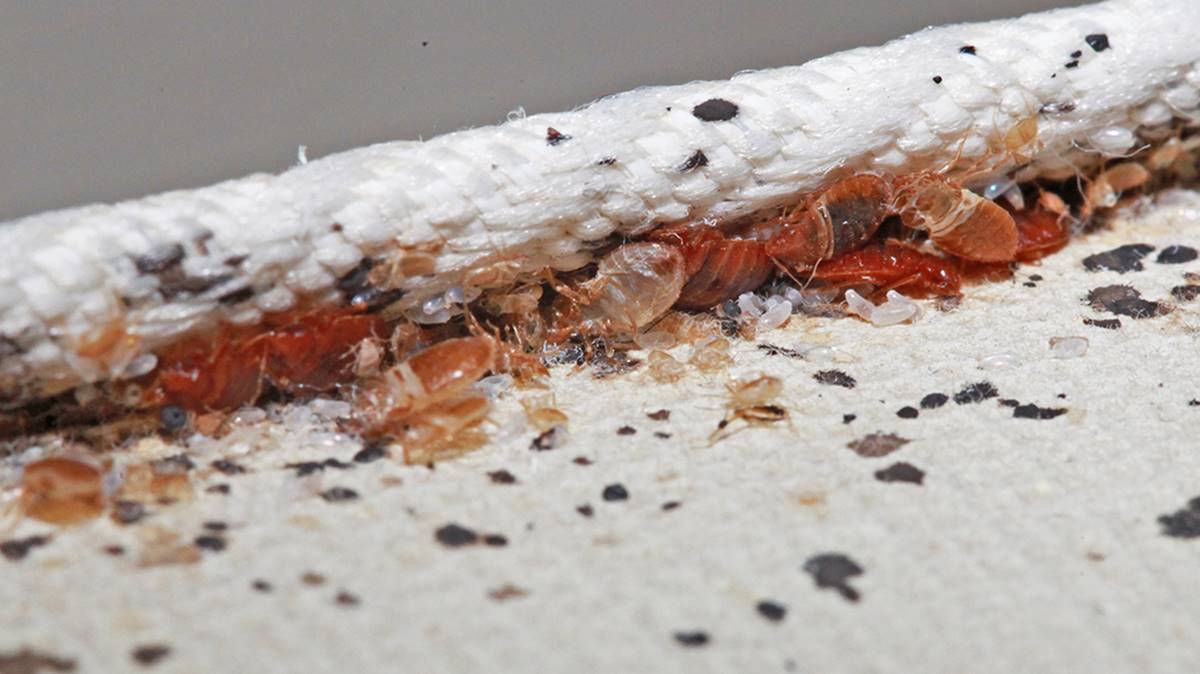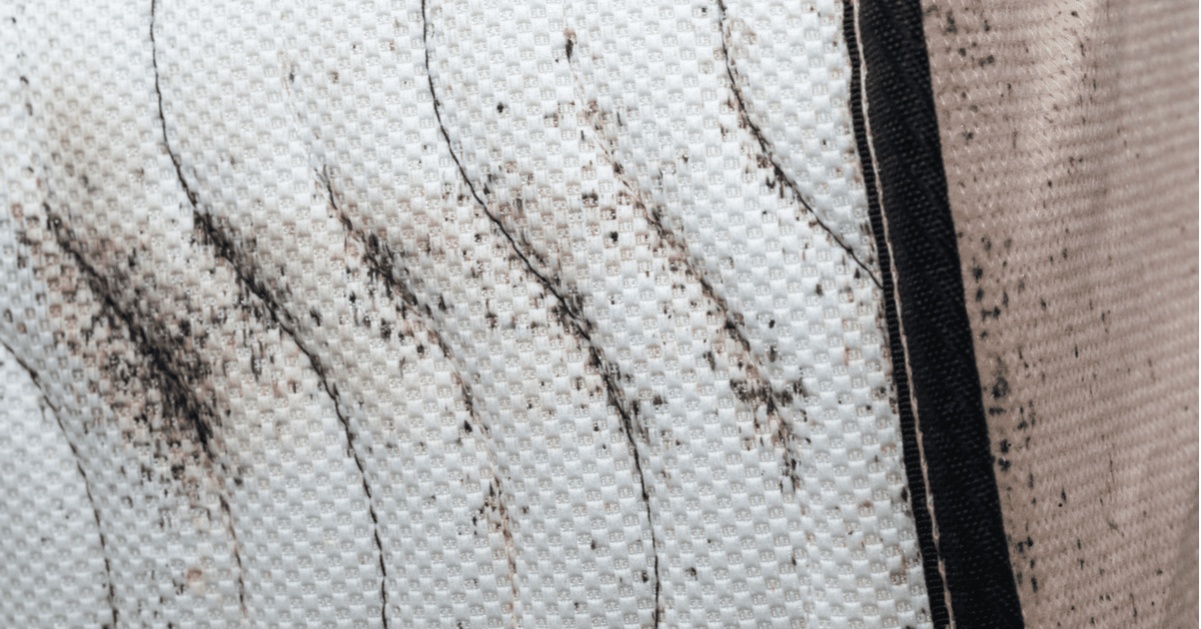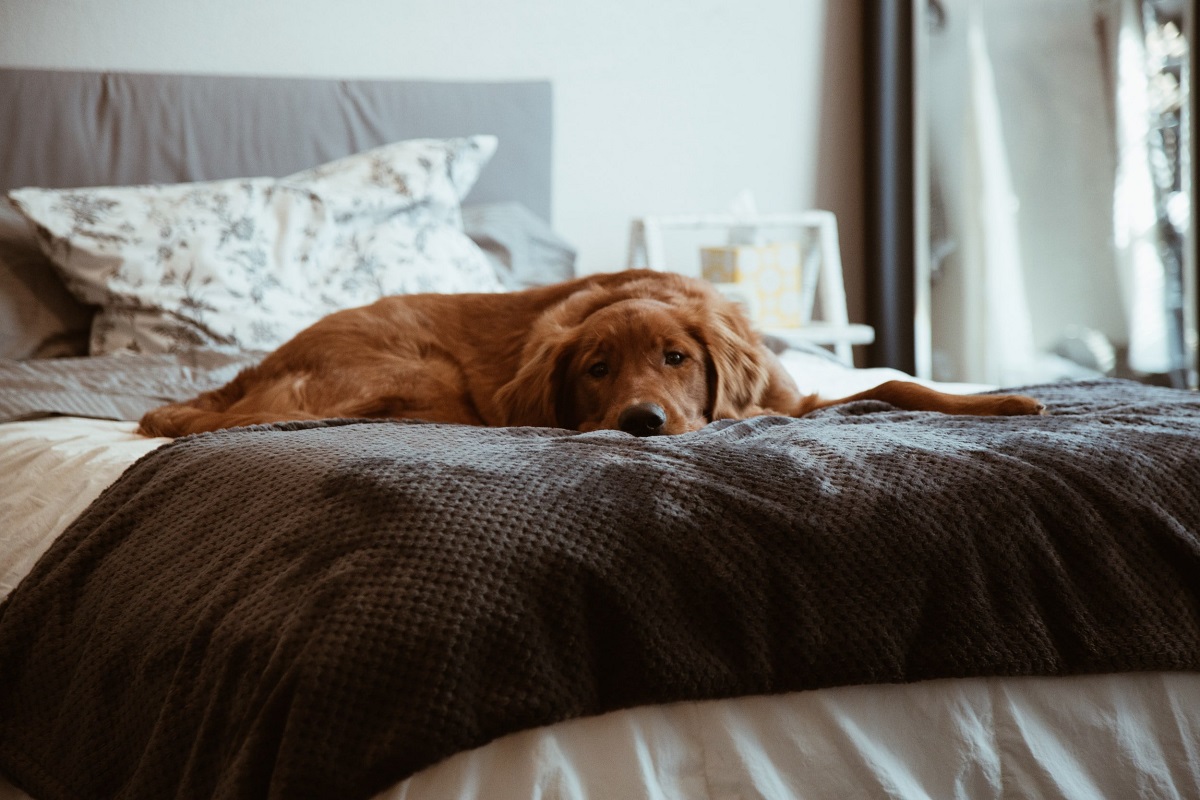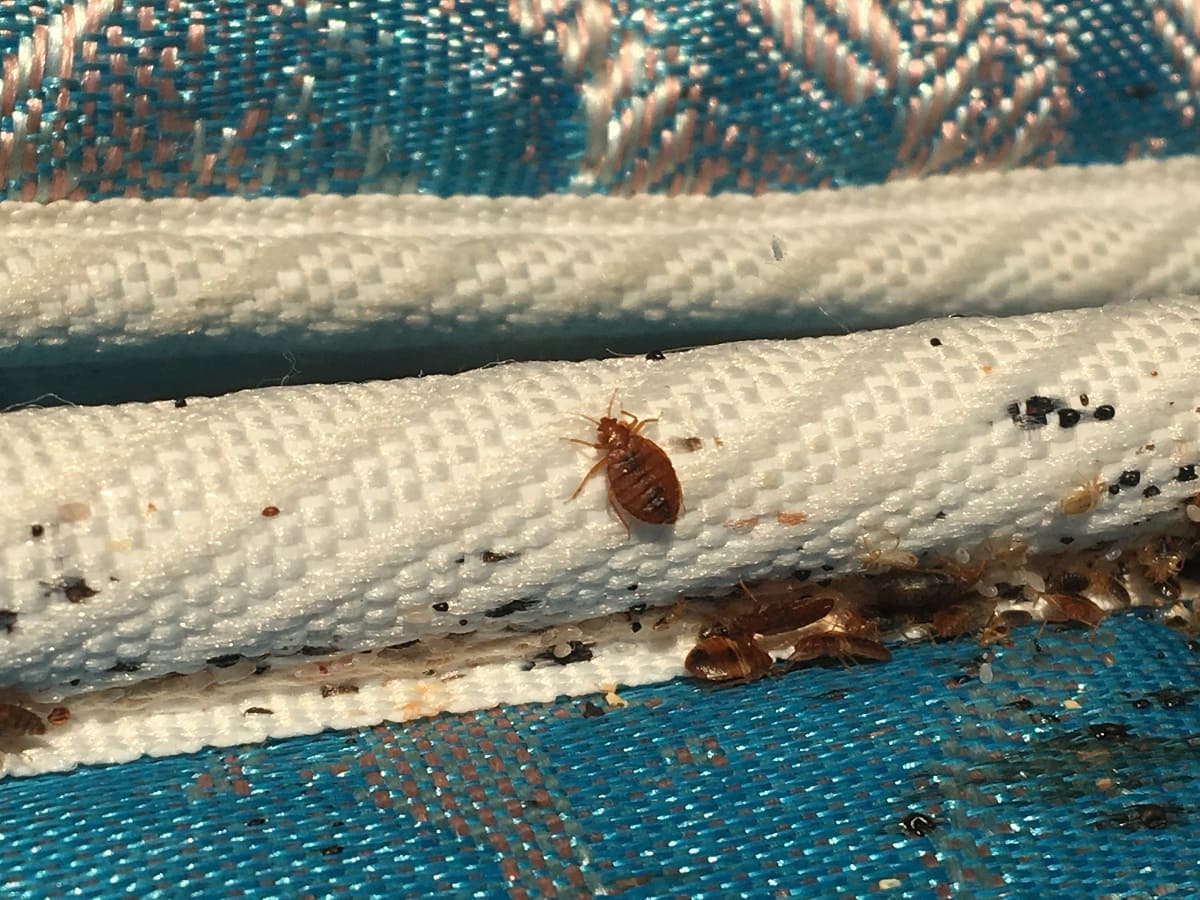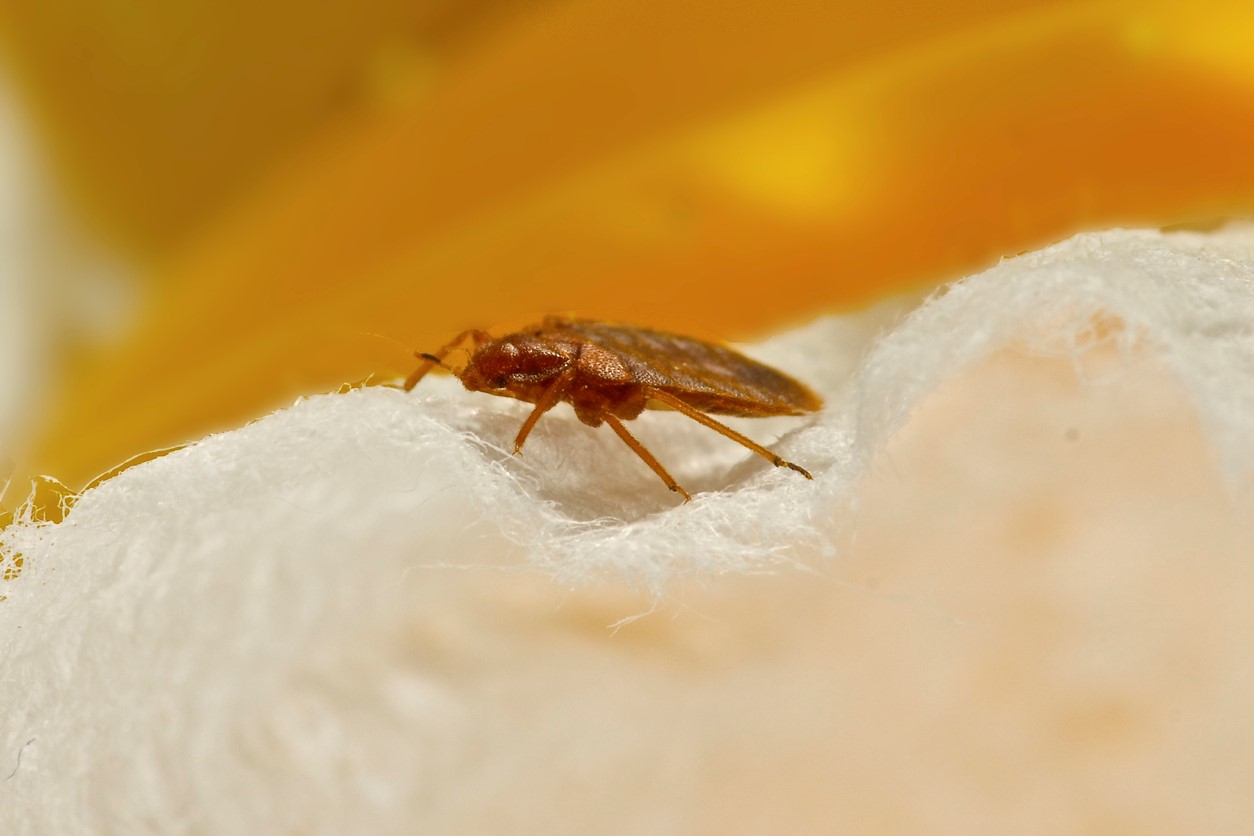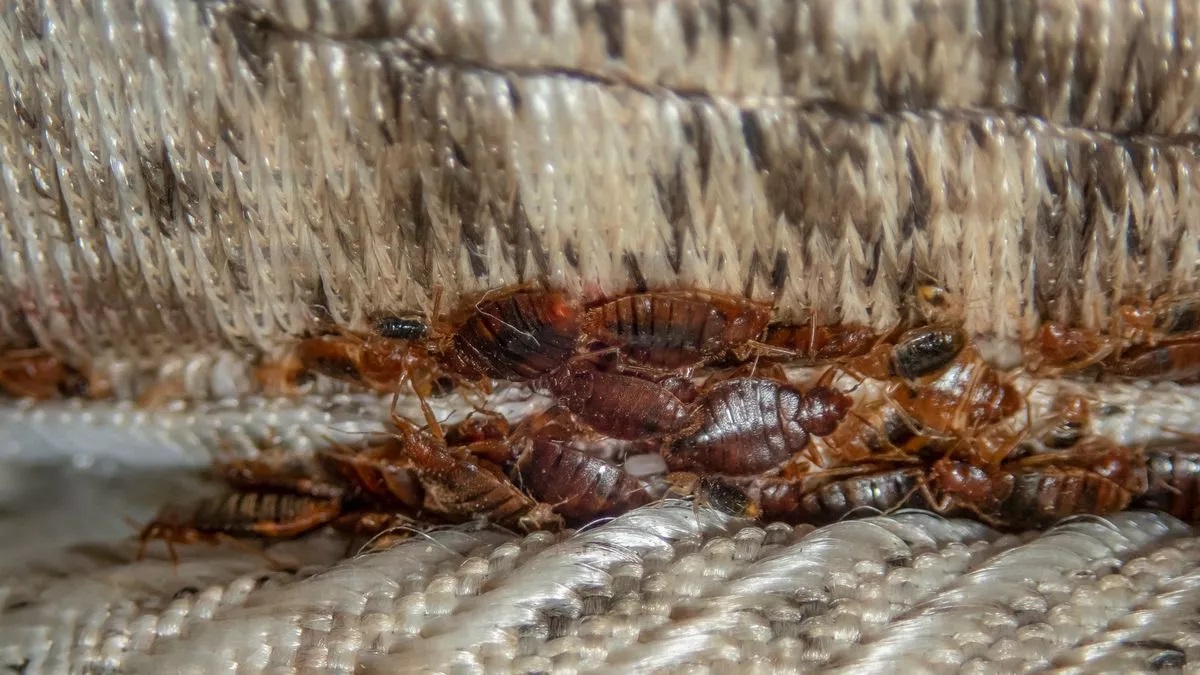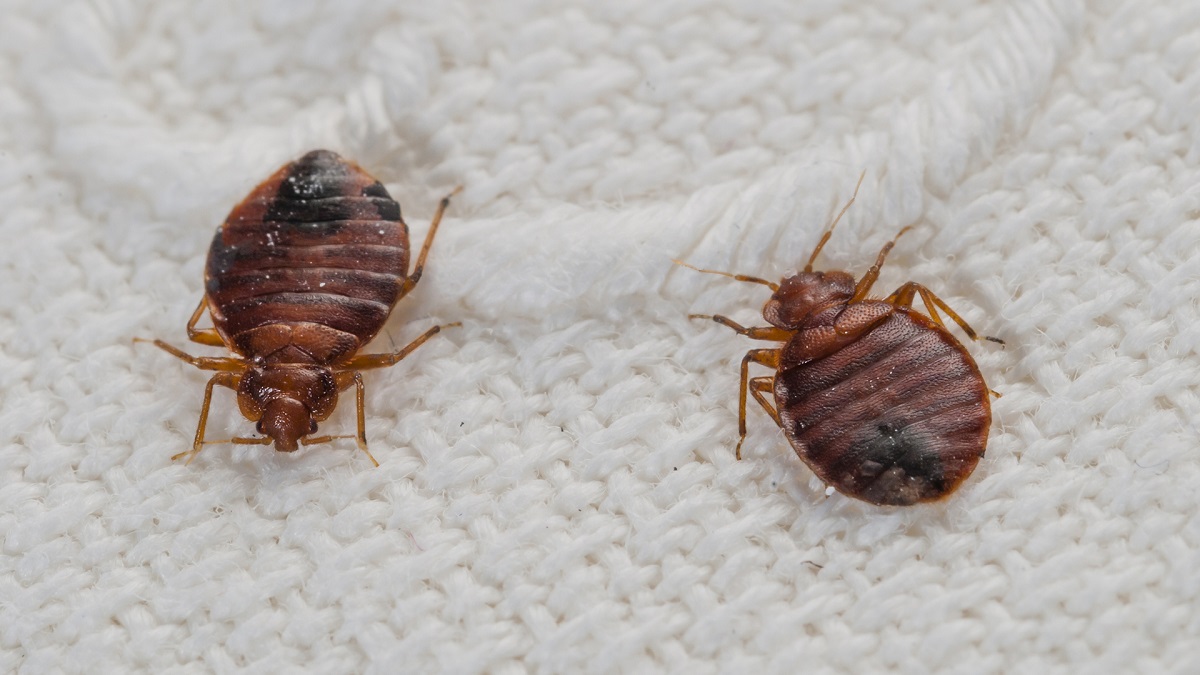Home>Furniture>Bedroom Furniture>What To Do If You Encounter Bed Bugs At A Hotel
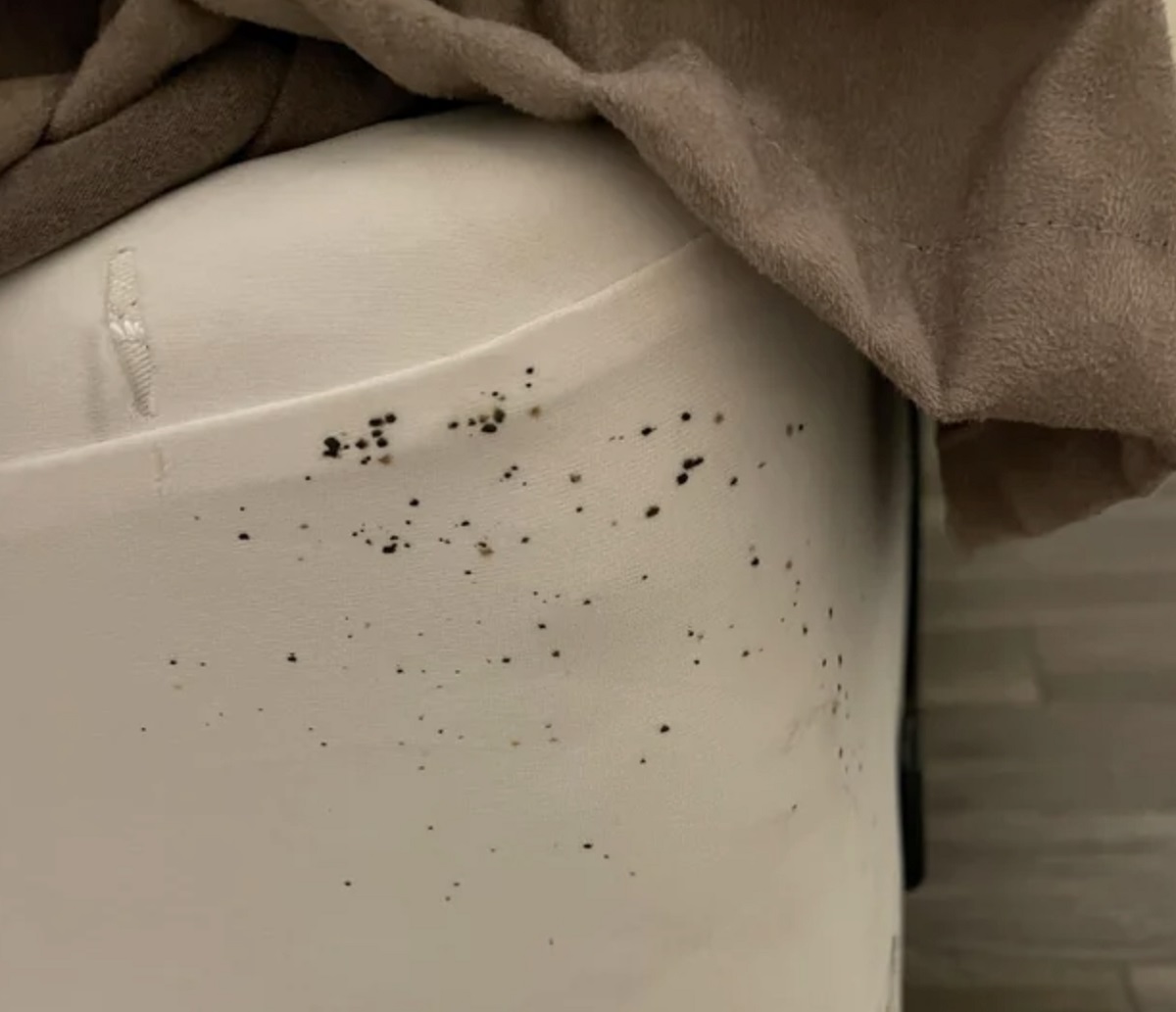

Bedroom Furniture
What To Do If You Encounter Bed Bugs At A Hotel
Modified: May 6, 2024
Discover effective ways to handle a bed bug encounter at a hotel during your stay. Keep your bedroom-furniture and peace of mind protected with our expert tips and advice.
(Many of the links in this article redirect to a specific reviewed product. Your purchase of these products through affiliate links helps to generate commission for Storables.com, at no extra cost. Learn more)
Introduction
There’s nothing quite as unsettling as discovering bed bugs during your stay at a hotel. These pesky insects can be a major nuisance, causing itchy bites and potentially hitching a ride home with you in your luggage. However, there’s no need to panic if you encounter bed bugs at a hotel. With the right approach, you can effectively deal with the situation and protect yourself from a potential infestation.
In this article, we will guide you through the steps to take if you find bed bugs in your hotel room. From identifying the pests to preventing further infestations, we’ve got you covered. So, let’s dive in and learn how to handle this unfortunate situation.
Key Takeaways:
- Don’t panic if you encounter bed bugs at a hotel. Follow the steps to identify, contain, and report the infestation to protect yourself and prevent further spread.
- Take proactive measures to prevent bringing bed bugs home. Inspect, treat, and quarantine your belongings, and stay vigilant during future travels to ensure a pest-free environment.
Read more: What To Do If You Have Bed Bugs
Step 1: Identifying bed bugs
The first step in dealing with bed bugs is to correctly identify them. These tiny, flat insects are reddish-brown in color and about the size of an apple seed. They typically hide in cracks and crevices close to their food source, which is usually humans.
When inspecting your hotel room, keep an eye out for the following signs of a bed bug infestation:
- Blood stains on the sheets: Look for small, rust-colored stains on the bedding, which could indicate bed bugs have been feeding.
- Dark spots on the mattress: Check for black or brown spots on the mattress or furniture, as these could be bed bug excrement.
- Eggshells and shed skins: Bed bugs molt as they grow, leaving behind their old skins and eggshells. Look for these signs in the vicinity of your bed.
- Musty odor: Bed bugs release a distinctive, sweet odor that some have described as similar to raspberries. If you notice an unusual smell in your hotel room, it could be an indication of an infestation.
If you come across any of these signs, it’s likely that bed bugs are present in your hotel room. It’s important to take immediate action to minimize the risk of bringing them home with you.
Step 2: Containing the infestation
Once you have identified bed bugs in your hotel room, it’s crucial to contain the infestation to prevent them from spreading. Follow these steps to minimize the risk:
- Keep your luggage off the floor: Bed bugs are excellent hitchhikers and can easily crawl onto your bags. Use luggage stands or keep your bags on elevated surfaces like tables or countertops.
- Isolate your belongings: Carefully place your clothing and other personal items into sealable plastic bags to prevent bed bugs from spreading to clean items or other areas of your suitcase.
- Avoid unpacking: While it may be tempting to settle in, try to live out of your suitcase during your stay. This will make it easier to keep your belongings contained.
- Seal cracks and crevices: Use tape to seal any cracks or gaps in furniture, walls, or baseboards. This will prevent bed bugs from escaping or entering neighboring rooms.
- Use a luggage liner or plastic wrap: Consider using a luggage liner or wrapping your suitcase in plastic before traveling. This will provide an additional layer of protection against bed bugs.
By taking these measures, you can greatly reduce the chances of bed bugs infesting your belongings and spreading to your home. However, remember that containing the infestation is only the first step. It’s essential to inform the hotel staff and take further action to ensure your safety and prevent future incidents.
Step 3: Informing the hotel staff
As soon as you discover bed bugs in your hotel room, it’s crucial to inform the hotel staff immediately. They need to be aware of the infestation so that they can take appropriate action and prevent the spread to other rooms.
When reporting the issue, remain calm and polite. Approach the front desk or call the hotel’s management, explaining the situation and providing them with details of where you found the bed bugs. It’s important to be specific and provide evidence if possible, such as photographs or video footage.
Most reputable hotels have protocols in place for dealing with bed bugs, and they will appreciate your cooperation in notifying them promptly. In many cases, hotels will take immediate action to inspect and treat the affected room to prevent further infestations.
Remember to keep a record of your conversation with the hotel staff, including the date, time, names of the staff members you spoke with, and any actions they agreed to take. This documentation may be useful if you need to follow up or file a complaint later.
By informing the hotel staff about the bed bug infestation, you not only protect yourself but also help them in addressing the issue promptly and ensuring the well-being of other guests.
Step 4: Requesting a room change
After informing the hotel staff about the bed bug infestation, it’s important to request a room change. Staying in the same room increases the risk of further contact with the pests and can lead to them infesting your belongings.
Approach the hotel staff politely but firmly, explaining the situation and expressing your concern for your safety and well-being. Request to be moved to a different room that is not adjacent to the infested one. This will help minimize the risk of bed bugs migrating from room to room through wall voids or electrical outlets.
When switching rooms, it’s crucial to take several precautions:
- Inspect the new room: Before settling in, thoroughly inspect the new room for any signs of bed bugs. Check the mattress, headboard, nightstands, and other furniture. Look for the characteristic signs mentioned in step 1, such as blood stains, dark spots, shed skins, or eggshells. If you spot any signs, request another room or consider changing hotels.
- Keep your luggage contained: While moving to the new room, make sure to keep your luggage sealed or wrapped in plastic to prevent any potential bed bugs from hitching a ride.
- Notify the hotel staff of any issues: If you find any signs of bed bugs in the new room or encounter any other problems, inform the hotel staff immediately. They should take appropriate action to address the issue and accommodate your needs.
By requesting a room change and taking necessary precautions, you minimize the chances of encountering bed bugs again and ensure a more comfortable and peaceful stay at the hotel.
Read more: How To Check For Bed Bugs In A Hotel
Step 5: Inspecting the new room
After requesting a room change and settling into the new room, it’s important to conduct a thorough inspection to ensure that it is free from bed bugs. Despite the hotel staff’s efforts, there is always a small possibility of an overlooked infestation.
Follow these steps to inspect the new room:
- Start with the bed: Strip the bedding and examine the mattress, paying close attention to the seams, edges, and corners. Look for any signs of bed bugs, such as stains, spots, or exoskeletons. Check the headboard and surrounding furniture as well.
- Inspect the furniture: Check all furniture, including nightstands, chairs, and closets, for signs of bed bugs. Pay particular attention to crevices and gaps where they may hide.
- Examine the curtains and upholstery: Bed bugs can also hide in curtains, upholstery, and any fabric materials in the room. Inspect them carefully for any signs of infestation.
- Check electrical outlets and baseboards: Bed bugs often seek refuge in electrical outlets, baseboards, and cracks in the walls. Use a flashlight to inspect these areas for any signs of activity.
- Be vigilant throughout your stay: Even if the initial inspection doesn’t reveal any signs of bed bugs, it’s important to remain vigilant throughout your stay. Keep an eye out for any unexpected bites or new signs of infestation.
If you discover any signs of bed bugs in the new room, notify the hotel staff immediately. They should take appropriate action to resolve the issue and provide you with a satisfactory solution, such as moving you to another room or offering a refund.
By conducting a thorough inspection of the new room, you can ensure a comfortable and bed bug-free stay.
When you encounter bed bugs at a hotel, immediately notify the front desk and request a different room. Inspect the new room for any signs of bed bugs before settling in. Keep your luggage off the floor and use a luggage rack instead.
Step 6: Protecting your luggage
When dealing with a potential bed bug infestation at a hotel, it’s crucial to take measures to protect your luggage and prevent the pests from hitching a ride back home with you. Here are some steps to safeguard your belongings:
- Keep your luggage elevated and away from walls: Avoid placing your suitcase directly on the floor or against walls. Use luggage racks, tables, or countertops to keep your bags elevated and away from potential bed bug hiding spots.
- Use luggage liners or encasements: Consider investing in luggage liners or encasements designed specifically to protect against bed bugs. These products can provide an additional barrier between your belongings and any potential pests.
- Use sealable plastic bags: Pack your clothing and other items in sealable plastic bags to create a protective barrier. This will prevent bed bugs from infesting your belongings and make it easier to inspect and launder them later.
- Avoid unpacking unnecessary items: Minimize the number of items you unpack during your stay. The fewer things you have out, the easier it is to keep them contained and protected.
- Inspect your luggage before leaving: Before checking out, inspect your luggage thoroughly for any signs of bed bugs. Pay attention to seams, pockets, and compartments where the pests may hide.
- Consider heat or cold treatment: If you suspect that your luggage may have come into contact with bed bugs, you can take additional precautions by exposing it to high heat or extreme cold. Bed bugs are sensitive to temperature, and these treatments can help kill any potential hitchhikers.
By following these steps, you can significantly reduce the risk of bringing bed bugs home with you. Prevention is key to ensuring a stress-free and pest-free return from your hotel stay.
Step 7: Treating your belongings
After encountering bed bugs at a hotel, it’s essential to take precautions and treat your belongings to eliminate any potential infestation. Here are some steps to help you handle this:
- Isolate infested items: If you suspect that any of your belongings have come into contact with bed bugs, immediately isolate them in sealable plastic bags or containers. This will prevent the pests from spreading to other items.
- Vacuum your luggage: Vacuum the exterior and interior of your suitcase thoroughly to remove any bed bugs or eggs that may be present. Pay close attention to seams, corners, and pockets.
- Wipe down hard surfaces: Use a damp cloth and mild detergent to wipe down hard surfaces of your luggage, such as zippers and handles. This can help remove any potential bed bug remnants.
- Fabric items: Launder all washable fabrics, such as clothing, in hot water. Bed bugs cannot survive high temperatures. Dry them on high heat as well to ensure they are fully treated.
- Non-washable items: For non-washable items, such as shoes or delicate fabrics, consider using a garment steamer or placing them in a sealed plastic bag and exposing them to high heat for at least 30 minutes.
- Inspect and treat electronics: Carefully inspect and wipe down electronic devices with a soft cloth to remove any potential bed bugs. Use a vacuum cleaner or compressed air to clean crevices.
- Consider professional treatments: If you’re concerned about the possibility of bed bugs infesting your belongings, you may opt to enlist the help of a professional pest control service. They can treat your items using specialized methods and products to ensure complete eradication.
By taking these steps, you can mitigate the risk of bringing bed bugs into your home and ensure that your belongings are free from any potential infestation.
Step 8: Laundering your clothes
When dealing with a bed bug infestation at a hotel, it’s crucial to properly launder your clothes to eliminate any potential pests. Follow these steps to effectively clean your garments:
- Sort your clothes: Separate your clothes into categories such as whites, colors, and delicates. This will help you determine appropriate washing settings.
- Wash in hot water: Bed bugs and their eggs are killed at temperatures above 120°F (49°C). So, set your washing machine to the hottest water setting allowed for your clothing items.
- Use detergent: Add a generous amount of laundry detergent to your wash. Bed bugs are susceptible to soap, and the detergent will help in getting rid of them effectively.
- Dry on high heat: After washing, transfer your clothes to the dryer and set it on the highest heat setting allowed for the fabric. The high temperatures will help eliminate any remaining bed bugs and their eggs.
- Inspect and store: Once the clothes are dry, inspect them thoroughly for any signs of bed bugs. Fold or hang them and store them in sealed plastic bags or containers to prevent re-infestation.
- Consider dry cleaning: If you have delicate or non-washable items, consider taking them to a professional dry cleaner. Inform them about the potential bed bug infestation so they can take appropriate measures.
- Dispose of infested items: If you discover heavily infested items that cannot be salvaged, it may be best to dispose of them properly to prevent further spread of bed bugs.
Remember to handle infested clothes with care to avoid spreading bed bugs to unaffected areas. It’s essential to launder all potentially infested clothing to prevent the pests from infesting your home and affecting your sense of comfort and well-being.
Read more: How Do You Check For Bed Bugs
Step 9: Preventing further infestations
After encountering bed bugs at a hotel, it’s important to take measures to prevent further infestations in your home or future travels. Here are some steps you can take to minimize the risk:
- Inspect your luggage: After returning from your trip, carefully inspect your luggage outside your home. Look for any signs of bed bugs and vacuum or wipe down your bags to remove any potential hitchhikers.
- Quarantine and treat items: If possible, quarantine your travel items in a dedicated area away from your living spaces, such as a garage or laundry room. Treat them using methods mentioned earlier, such as heat or cold treatment, to ensure any remaining bed bugs are eliminated.
- Regularly clean and vacuum: Maintain a clean and clutter-free environment in your home. Vacuum your living areas, including carpets, rugs, mattresses, and upholstered furniture regularly to remove any potential bed bugs or eggs.
- Use mattress encasements: Consider using mattress and box spring encasements designed to prevent bed bugs from infesting your bed. These encasements create a protective barrier and make it easier to detect and eliminate any potential infestations.
- Inspect secondhand items: Thoroughly inspect any secondhand furniture or belongings you bring into your home for signs of bed bugs. Avoid acquiring items from unknown or infested sources.
- Be cautious when traveling: When staying at hotels or other accommodations, conduct a thorough inspection of the room for signs of bed bugs before settling in. Keep your luggage elevated and off the floor, and take preventive measures mentioned earlier.
- Inform future accommodations: If you have had a previous encounter with bed bugs, it’s important to inform future accommodations about your experience. This will prompt them to take additional precautions to ensure a pest-free environment.
- Stay vigilant: Even with preventive measures in place, it’s essential to remain vigilant. Be aware of any signs of bed bugs, such as unexplained bites or dark spots on bedding, and act promptly if any concerns arise.
By implementing these preventive measures, you can significantly reduce the risk of encountering bed bugs in your home or during future travels. Stay proactive and ensure a peaceful and bed bug-free environment.
Conclusion
Encountering bed bugs at a hotel can be a distressing experience, but with the right approach, you can effectively handle the situation and protect yourself from a potential infestation. By following the steps outlined in this guide, you can navigate the process with confidence and minimize the risks associated with bed bugs.
From identifying bed bugs to containing the infestation, informing the hotel staff, and requesting a room change, each step is crucial in ensuring your safety and preventing the spread of these pests. Inspecting the new room, protecting your luggage, treating your belongings, laundering your clothes, and taking steps to prevent further infestations are all vital in resolving and preventing bed bug issues.
Remember, prevention is key. By maintaining cleanliness, regularly vacuuming, using mattress encasements, and being cautious when traveling, you can greatly reduce the likelihood of encountering bed bugs in the future.
Bed bug encounters are not uncommon, even in the cleanest of establishments. However, by staying knowledgeable, vigilant, and prepared, you can effectively deal with these pests and ensure a restful and bed bug-free stay.
With the information provided in this guide, you are now equipped to handle any potential bed bug situation confidently. Stay proactive, take the necessary precautions, and enjoy your travels with peace of mind.
Now that you've learned how to tackle bed bugs on your travels, why not tackle another common household pest? Managing moths in your pantry can be just as crucial to maintain a clean and safe home environment. Our experts offer practical advice on dealing with these uninvited guests effectively. If you're curious about strategies for keeping your pantry moth-free, you'll definitely want to check out our next guide on effective pest control measures.
Frequently Asked Questions about What To Do If You Encounter Bed Bugs At A Hotel
Was this page helpful?
At Storables.com, we guarantee accurate and reliable information. Our content, validated by Expert Board Contributors, is crafted following stringent Editorial Policies. We're committed to providing you with well-researched, expert-backed insights for all your informational needs.
